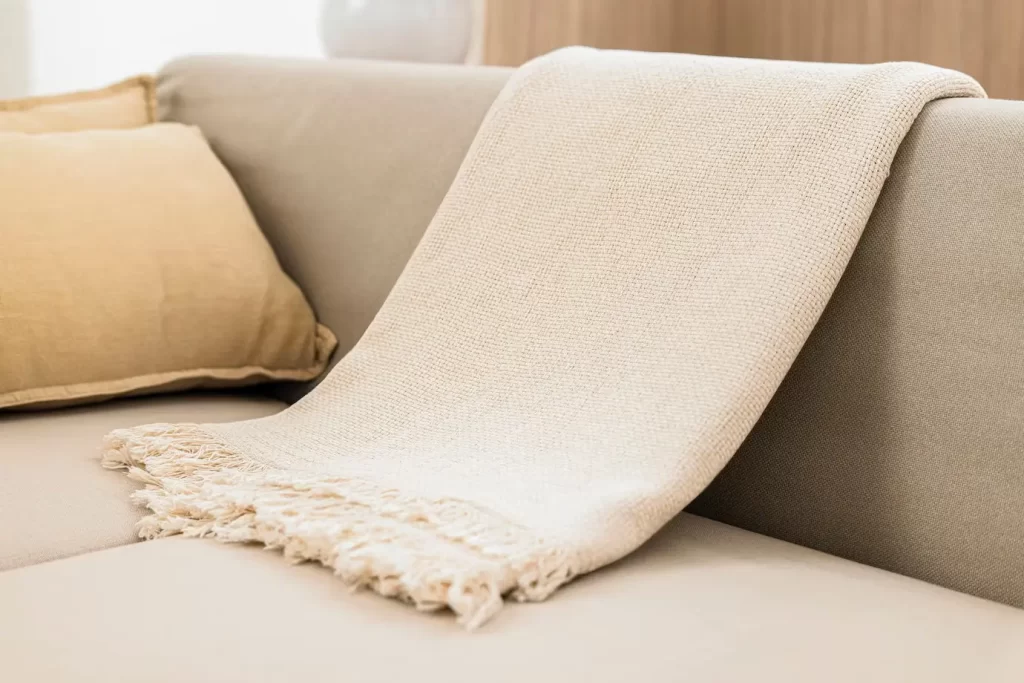Weighted blankets have always been precious for those looking for comfort and stress relief or to add a nice touch to their sleep. However, it is not as easy as just washing an ordinary blanket. Because weighted blankets are designed in a certain way and comprise specific elements, they demand certain care to remain long-lasting. Care will extend the life span of the blanket by keeping it safe and clean to use. We are going to lead you step by step on how to wash a weighted blanket in a very detailed approach and give tips on how to maintain it for the long haul.
Steps on How to Wash a Weighted Blanket

Step 1: The Care Label
Every weighted blanket has a minuscule piece of information about it, often called the care label. These are instructions directly from the manufacturer as to how one should clean and maintain the blanket which plays an important role in understanding how to wash a weighted blanket. Instructions will be given on what to do if the blanket tears or clumps due to mishandling based on the weakness of the materials and construction of the blanket. It also runs the risk of messing up the blanket if it’s mishandled without considering the suggestions given. A number of the blankets are only cleaned by spots and others may get light machine wash. Anyway, what the label stipulates must be followed for a longer life for your blanket.
Step 2: Identify the Materials
The manufacturer’s instructions determine how to wash a weighted blanket. Most of the material is made from cotton fleece or microfiber, while the stuffing material is made from glass beads, plastic pellets, or organic stuff like sand or rice. All these react uniquely with water, heat, and detergents. These are the common materials that you should be aware of:
- Glass beads: Glass beads are very strong and not easy to clean and generally accept machine washing.
- Plastic beads: These are temperature sensitive; take care not to get it too hot so that it won’t melt.
- Inorganic fillers like rice or sand: Do not clean with water but spot clean or other cleaning processes aside from cleaning with water.
Knowing your materials will save you from unwanted damage and lets you apply the correct cleaning method.
Step 3: Spot Cleaning for Minor Spills
Spot cleaning is ideal for small stains or spills. It is mild enough not to cause wear and tear on the material and allows your blanket to stay fresh until a full wash. These are the two essential and commonly found essentials that you will need for this method:
- Lukewarm water
- Diluted or mild detergent
Moisten a clean cloth or sponge with water and gently dab the stained area with the detergent, do not scrub as that would damage the fabric. Use a damp cloth to rinse the spot and allow it to air-dry completely before using the blanket again.
You will also save time with spot cleaning and extend the life of your weighted blanket.
Step 4: Machine Washing

If your weighted blanket can be machine washed safely, do so safely and efficiently:
- Use a front-loading washer: Top-loading machines with agitators will likely destroy the fabric and filling.
- Choose a cycle: Chose a soft cycle using either cold or warm water, following the instructions found on the garment’s care tag
- Mild Detergent: choose a detergent with no bleach no fabric softeners and No harsh chemicals.
- Proper room in the washing machine: there should be ample space in the washer for the blanket to have some flexibility to swivel around in the washer.
If it is too large for your home washer, go to a laundromat and look for the industrial-sized washers that will make this process so easy for you.
Step 5: Hand washing for delicate blankets
In case the weighted blanket cannot be machine washed, then hand washing comes in as the second option in this guide on how to wash a weighted blanket. This is somehow a little challenging task but it cleanes to its core without damage. To hand wash it, pour lukewarm water into the bathtub or any large basin and then add tiny quantities of soap with gentle a stir until the water is soapy.
Dip the blanket in the water and work out dirt and oils from it by the massaging motion of hands on the fabric. Pay special attention to the dirty places. Do not wring nor twist the blanket because that will cause it to clump up or the filling will clodge unevenly. Drain the soap water from the tub and fill it with clean water for rinsing, when cleaned. Rinse well until soap comes out. Slowly draw the blanket from the water, and squeeze out all the moisture that can come out.
Step 6: Dry the Blanket
One must dry a weighted blanket with care, not affecting its structure and function it while taking care the blankets, particularly the ones containing fragile fillings or fabrics, need to be air-dried. Lay out the blanket on a clean, dry surface like a clothes rack, a large towel, or a table. Re-shape the blanket while drying so the filling is evenly spread out.
Iron on low setting or let it air dry according to the tag on care. Insert some clean tennis balls or dryer balls so the filling would spread in all areas to prevent the stuffings from gathering into some parts. And then inspect the blanket, to ensure that it is not getting over hot it out of the dryer once dry. Both cloth and filling are destroyed in a hot setting on a dryer.
Step 7: Some Extra Care Instructions
One of the good features of a weighted blanket is that it will minimize washing time as it has a removable cover. This should be put on as a protective layer so that nothing touches its weight: dirt, oils, and spills. A cover will make it easy to clean as compared to washing and drying the quilt directly. It also comes in various materials according to your preference.
Rotating is another good way of maintaining the condition of your blanket. This eliminates extreme wearing out in one spot, and through constant use, the weight will be evenly spread. Lastly, when storing your blanket, one has to keep it in an appropriate cool place to prevent moisture accumulation, mould, and odours. This way, your blanket remains fresh, clean, and ready for use.
Conclusion
It seems like a herculean task to wash a weighted blanket. However, when done the right way, the process is very manageable. Knowing what materials your blanket is made from, then following the care instructions after that, and gentle cleaning can ensure that your blanket will be clean, comfy, and working at its best for years and years. Regular maintenance will ensure the quality of your blankets while continuing to provide you with soothing and therapeutic benefits that you rely on.
Proper care for your weighted blanket prevents damage and increases its lifetime. You may need to clean out small stains, and full washes, or keep it fresh, and it’s worth it. This guide on how to wash a weighted blanket instils confidence in taking care of your weighted blanket, letting you be huggled at night again and again by its comfort.




